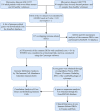Genetic and immune crosstalk between severe burns and blunt trauma: A study of transcriptomic data
- PMID: 36246590
- PMCID: PMC9561827
- DOI: 10.3389/fgene.2022.1038222
Genetic and immune crosstalk between severe burns and blunt trauma: A study of transcriptomic data
Abstract
Background: Severe burns and blunt trauma can lead to multiple organ dysfunction syndrome, the leading cause of death in intensive care units. In addition to infection, the degree of immune inflammatory response also affects prognosis. However, the characteristics and clinical relevance of the common mechanisms of these major diseases are still underexplored. Methods: In the present study, we performed microarray data analysis to identify immune-related differentially expressed genes (DEGs) involved in both disease progression in burns and blunt trauma. Six analyses were subsequently performed, including gene enrichment analysis, protein-protein interaction (PPI) network construction, immune cell infiltration analysis, core gene identification, co-expression network analysis, and clinical correlation analysis. Results: A total of 117 common immune-related DEGs was selected for subsequent analyses. Functional analysis emphasizes the important role of Th17 cell differentiation, Th1 and Th2 cell differentiation, Cytokine-cytokine receptor interaction and T cell receptor signaling pathway in these two diseases. Finally, eight core DEGs were identified using cytoHubba, including CD8A, IL10, CCL5, CD28, LCK, CCL4, IL2RB, and STAT1. The correlation analysis showed that the identified core DEGs were more or less significantly associated with simultaneous dysregulation of immune cells in blunt trauma and sepsis patients. Of these, the downregulation of CD8A and CD28 had a worse prognosis. Conclusion: Our analysis lays the groundwork for future studies to elucidate molecular mechanisms shared in burns and blunt trauma. The functional roles of identified core immune-related DEGs and dysregulated immune cell subsets warrant further in-depth study.
Keywords: bioinformatics; blunt trauma; burns; core immune-related genes; differentially expressed genes; immune cell infiltration.
Copyright © 2022 Chen, Wang, Li, Zhao, Huang, Su and Yu.
Conflict of interest statement
The authors declare that the research was conducted in the absence of any commercial or financial relationships that could be construed as a potential conflict of interest.
Figures









Similar articles
-
Screening and identification of the core immune-related genes and immune cell infiltration in severe burns and sepsis.J Cell Mol Med. 2023 Jun;27(11):1493-1508. doi: 10.1111/jcmm.17749. Epub 2023 Apr 15. J Cell Mol Med. 2023. PMID: 37060578 Free PMC article.
-
Identification of Immune-Related Genes Concurrently Involved in Critical Illnesses Across Different Etiologies: A Data-Driven Analysis.Front Immunol. 2022 May 9;13:858864. doi: 10.3389/fimmu.2022.858864. eCollection 2022. Front Immunol. 2022. PMID: 35615364 Free PMC article.
-
Altered Genes and Biological Functions in Response to Severe Burns.Biomed Res Int. 2021 May 24;2021:8836243. doi: 10.1155/2021/8836243. eCollection 2021. Biomed Res Int. 2021. PMID: 34124262 Free PMC article.
-
[Bioinformatical analysis of function and differentiation of Th1/17 cells].Xi Bao Yu Fen Zi Mian Yi Xue Za Zhi. 2019 Sep;35(9):783-788. Xi Bao Yu Fen Zi Mian Yi Xue Za Zhi. 2019. PMID: 31750818 Chinese.
-
Identification of differentially expressed genes, signaling pathways and immune infiltration in rheumatoid arthritis by integrated bioinformatics analysis.Hereditas. 2021 Jan 4;158(1):5. doi: 10.1186/s41065-020-00169-3. Hereditas. 2021. PMID: 33397492 Free PMC article.
Cited by
-
Screening and identification of the core immune-related genes and immune cell infiltration in severe burns and sepsis.J Cell Mol Med. 2023 Jun;27(11):1493-1508. doi: 10.1111/jcmm.17749. Epub 2023 Apr 15. J Cell Mol Med. 2023. PMID: 37060578 Free PMC article.
References
-
- Antonacci A. C., Calvano S. E., Reaves L. E., Prajapati A., Bockman R., Welte K., et al. (1984). Autologous and allogeneic mixed-lymphocyte responses following thermal injury in man: The immunomodulatory effects of interleukin 1, interleukin 2, and a prostaglandin inhibitor, WY-18251. Clin. Immunol. Immunopathol. 30 (2), 304–320. 10.1016/0090-1229(84)90064-3 - DOI - PubMed
LinkOut - more resources
Full Text Sources
Research Materials
Miscellaneous

